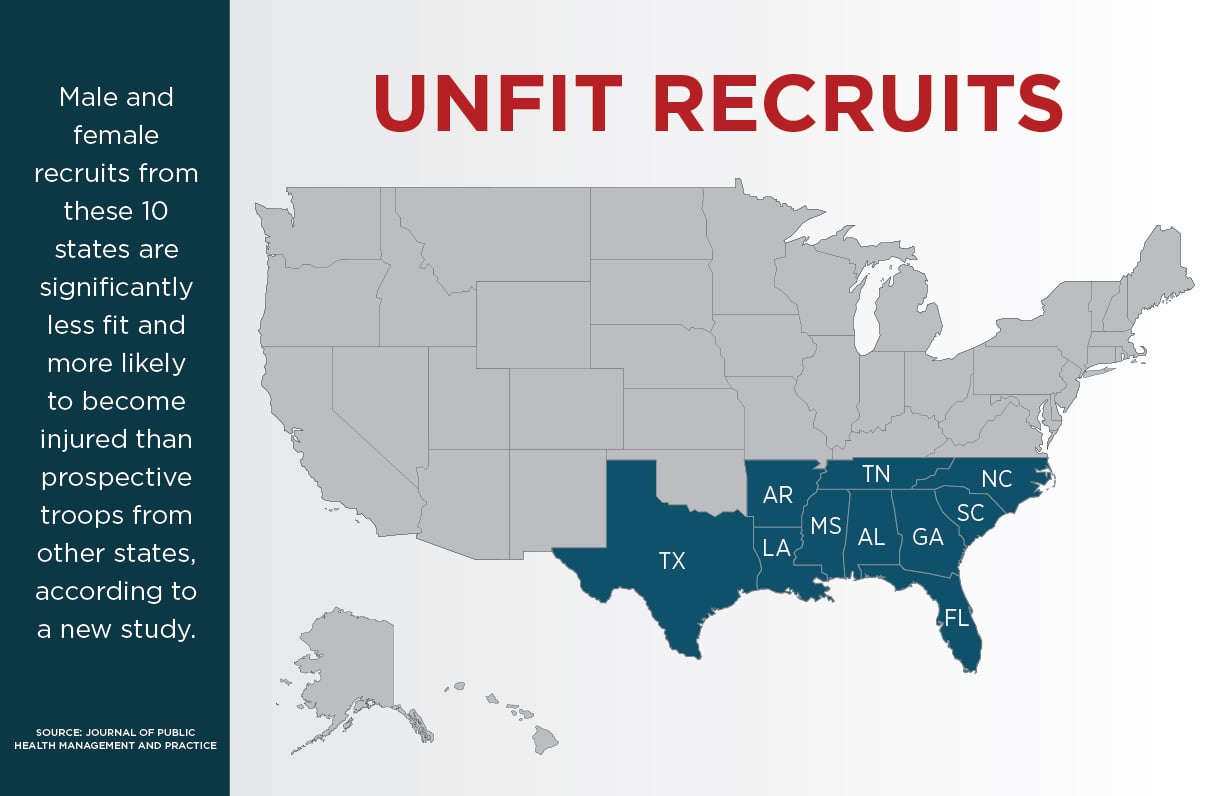Prospective soldiers from a band of Southern states are 22 percent more likely to get hurt in basic or combat training than recruits from other parts of the country, according to a new study.
States stretching from the South to Southeast are “producing male and female recruits who were significantly less fit and/or more likely to become injured than recruits from other U.S. states,” researchers at The Citadel military college in South Carolina found. The authors examined the rosters of all recruits who entered Army basic training between 2010 and 2013, including their home states, height, and weight.
The 10 states whose recruits showed the lowest median fitness, according to the study, were Alabama, Arkansas, Florida, Georgia, Louisiana, Mississippi, North Carolina, Oklahoma, South Carolina, and Tennessee. A cluster of 11 states in the South or Southeast were among the 16 most likely to produce Army recruits who later suffered injuries: Alabama, Arkansas, Florida, Georgia, Louisiana, Mississippi, Oklahoma, South Carolina, Tennessee, Texas, and West Virginia.
“Those with lower [physical activity] and/or physical fitness levels prior to military service are at increased risk for sustaining a training-related injury (TRI) during basic combat training,” the report states.
Rising obesity levels and plummeting physical activity have shrunk the military's recruiting pool. About 7 in 10 young Americans is unfit to serve, with weight being a top culprit.
Training-related injuries are also the Pentagon's biggest threat to readiness, according to the study. Since troops suffering those injuries tend to hail from certain states, the researchers were on a mission to determine whether some areas of the country pose “disproportionate threats to military readiness and national security.”
“Our results suggest that the [Southern] states identified here pose a greater threat to military readiness than do other states,” the authors wrote.
New federal and state policies can help though, they say. Requiring quality physical education and providing more bike and pedestrian paths, for example, can result in better physical activity levels.
“Some of the greatest public health achievements have come as the result of state-level policy change,” the report states.
“Perhaps framing physical inactivity and low fitness level as matters of military readiness and national security … could advance advocacy efforts,” researchers added.
You can read the full report here.
